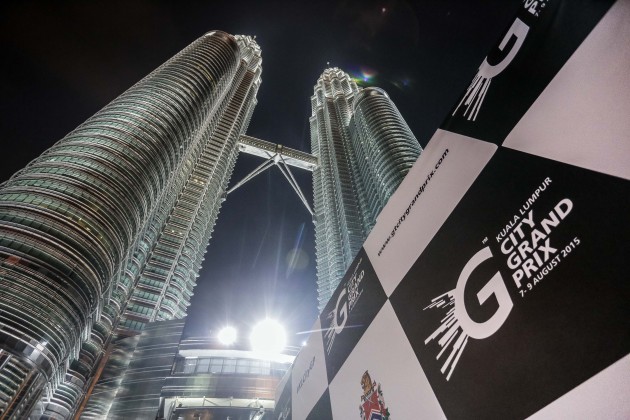The recent Kuala Lumpur City GP has not gone down well with businesses situated within the vicinity of the 3.2 km track. The Malaysian Employers Federation (MEF) has claimed that affected businesses have had to incur as much as three to four days’ worth of losses over the event period.
Datuk Shamsuddin Bardan, MEF executive director told The Sun that it was not fair to businesses that were affected by the event, adding that “they had to suffer in silence, there was nothing they could do about it.”
“When people are not able to come in to the area, of course their incomes were affected,” he said, referring to the closure of five major roads within the golden triangle. He stressed that should the KL City GP take place annually, this would be worrying as it would be difficult for companies to operate on such basis.
Shamsuddin then questioned the necessity of organising the race in the city, when there is a first class track readily available, referring to the Sepang International Circuit. “The track in Sepang has all the necessary safety features that are required. They should have just used that circuit,” he highlighted.
As for the KL GP itself, race organiser GT Global Race was chuffed with the way the whole event ran. The company’s president and CEO M. Arrasu said that spectator attendance was significantly higher that what was predicted, with a crowd of about 250,000 reportedly present for for event.
So guys, what’s your stand on the Kuala Lumpur City GP?
Looking to sell your car? Sell it with Carro.












AI-generated Summary ✨
The comments reflect widespread disapproval of the KL City GP, citing significant traffic congestion, road disruptions, and negative impacts on local businesses. Many feel the event caused unnecessary inconvenience, especially to small businesses and residents, and criticize poor planning and barricade management. Some argue the race is more for entertainment and personal gains of organizers rather than benefiting the city, with claims that it failed to boost local commerce and caused cancellations in hotels and retail outlets. There is a general sentiment that such events should be held at dedicated circuits like Sepang or Putrajaya instead of disrupting the busy city center. Several comments express frustration about poor communication, safety hazards, and the absence of benefits for the local community. Overall, the tone is largely negative, emphasizing economic loss, inconvenience, and mismanagement.